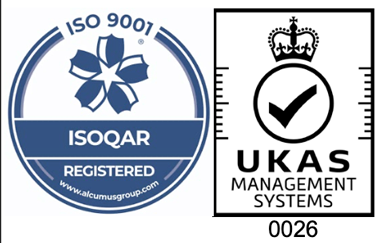What’s the difference between sponge and foam rubber?
27th December, 2018
The differentiation between foam rubber and sponge rubber materials is very important to technical buyers – after all, materials are chosen based not only on their functionality but also on their safety. For example, in the mass transit industry, some silicone foams meet FST standards, while the majority of carbon black foams fall short. Foam rubber and sponge rubber both have the advantage of low density but they behave differently in the form of a barrier. Keep reading to find out about foam rubber and sponge rubber.
How is foam rubber made?
Foam rubber uses a gas or chemical known as a ‘blowing agent’ to produce gas, which creates multiple small bubbles inside a liquid mixture. This mixture usually consists of:
- Polyols
- Polyisocyanates
- Water
- Flame retardants
- Fillers
- Colourants
Polyols and polyisocyanates are both types of liquid polymer – when combined with water, they produce an exothermic (heat-generating) reaction. By combining different types of liquid polymer, a foam rubber manufacturer can create either flexible or rigid foam rubbers.
This process is known as polymerisation and is the point at which molecules from the polyols and polyisocyanates crosslink, forming 3D structures. This takes place in a machine called a compounder, which can control the level of foaming by adjusting the volume of surfactants and water in the mixture.
How is sponge rubber made?
Sponge rubber is manufactured in a similar way to foam rubber, except it is designed to come in two distinct densities: open cell, and closed-cell.
In closed cell sponge rubber, the holes within the material are – as the name suggests – closed off from each other, which creates a dense material full of tiny vacuums. Open-cell sponge rubber contains many open holes that allow air to fill the material. This makes it a far less dense material that is cheaper to manufacture as it comprises less material and more air per square metre.
To produce open cell sponge rubber, ingredients are mixed in a heated mould, before sodium bicarbonate is added. The uncured sponge then rises like a cake, with the baking soda creating a network of tiny, interconnected bubbles.
Conversely, manufacturing closed cell rubber involves using a chemical powder that decomposes under heat. The pressure is added to the mixture, and nitrogen gas is produced, which helps give closed cell sponge rubber its density and strength.
Foam rubber and sponge rubber from Aquaseal
Aquaseal manufactures our sponge rubber (both open and closed cell) and foam rubber from synthetic and natural rubbers. Our products are used for applications requiring pads, shapes, coils, and rubber gaskets, as well as mouse mat bases and simple strips of material.
Do you need a bespoke foam rubber or sponge rubber solution? Get in touch with the Aquaseal team today on 0191 266 0934.


